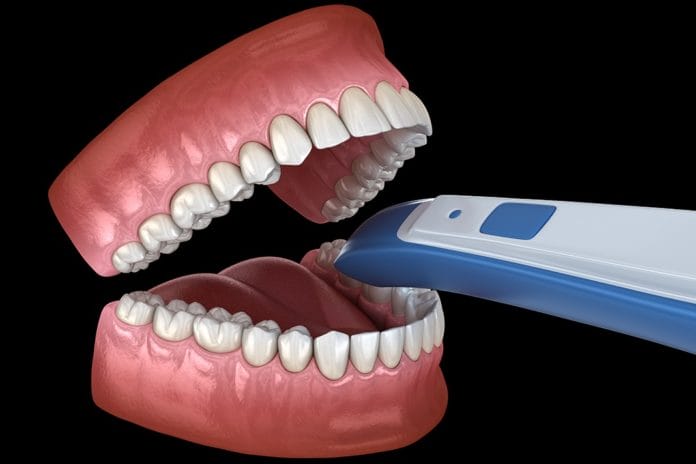The dental hygiene appointment − the shortest and fullest hour. As technology has changed, dental hygiene appointments have changed with it. For the biannual recall patient, these changes may go unnoticed or may seem insignificant. For the dental hygienist, these changes cannot be overlooked. With each new procedure or device, the list of things a hygienist needs to accomplish in the appointment time gets longer and longer. The problem? The appointment length stays the same or perhaps becomes even shorter.
You may share my sentiments on this as our offices roll out new devices and the latest advances. Giving the best care for our patients is our chief concern, and technology definitely should be utilized to assist in this, but it is often left up to the hygienist to figure out how to do more in the same amount of time.
The most recent addition to many dental hygiene appointments is the incorporation of an intraoral digital scanner. These scanners use a camera to scan the mouth, creating a three-dimensional image. Dental offices have been incorporating this technology into their hygiene, orthodontic, and restorative appointments. The three-dimensional image that is produced through the scanning process can be used for patient education, to create orthodontic treatment simulations, as a part of recordkeeping, and to assist in crown preparation procedures.1
While the benefits can be considered to outweigh the negatives, the greatest hurdle of incorporating this technology often is finding time for the scanning to be performed.1 Like any other technology, the use of the digital scanner is technique sensitive and requires practice in order to be efficiently used.
After struggling in my own appointment blocks, I have found several tips and tricks of the digital scanner to help perform an efficient scan.
Prepare your Patient
Start by explaining what the digital scanner is, that it will be performed at no additional cost and that it does not produce any radiation. Patients often have questions that cause apprehension that could easily be avoided if procedures are properly explained. Discuss how long the scanning will take, that the patient will be asked to hold their mouth open and that the camera will be placed along their teeth to collect the image.
Dry the Teeth
You can see better without saliva covering everything, and so does the scanner. Blowing air onto the teeth or asking the patient to swallow will help you collect your image faster.
Wipe Down the Screen as the Scanner is Finishing the Image
One delay I have experienced with digital scanning devices is the time the scanner takes following completion of the scan to process and send the scan. Using this time to wipe down and clean up the device will ensure you are ready to show the scan to the patient as soon as the process is complete.
Utilize the Image for Patient Education
One of my favorite aspects of the digital scanner is that it allows the patient to see what we see. Instead of spending time following scaling to discuss oral hygiene instructions, consider using the digital image to show the patient areas where they need to pay more attention.
Have a patient with heavy calculus? Scan the patient prior to scaling to show the patient the buildup. Tired of trying to explain recession to your patients when recommending fluoride? A clear image allows the patient to comprehend better what you are explaining. Showing your patients what you are talking about creates a higher level of trust and understanding.
The incorporation of a digital scanner can greatly benefit a dental practice and its patients.1 Instead of dreading the addition of an added step to the dental hygiene appointment, using these helpful tips can allow the scanning experience to be smooth and exciting for the clinician and patient.
Reference
- Mangano, F., Gandolfi, A., Luongo, G., Logozzo, S. (2017, December 12). Intraoral scanners in dentistry: A review of the current literature. BMC Oral Health. Retrieved from https://bmcoralhealth.biomedcentral.com/articles/10.1186/s12903-017-0442-x












